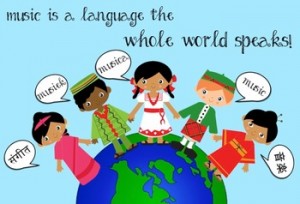It is a well-known and established fact that music has a powerful influence on our lives. It can calm us down when we are anxious or stressed, and cheer us up or energize us when we are ready to drop. It can make us laugh or cry as well, furthermore, it can raise goose bumps on our arms. It can be a social glue, pointing to its use in important events such as a celebration (birthday, graduation, wedding), funerals or worships. It seems that music was always a key component of these events.

According to Rich Allen, there are three most common uses for music, which are universally practiced all over the world: to regulate mood (to make us feel better), to manipulate energy levels (to help us both relax and energize, to sharpen and maintain, or to shut out distractions. Studies were carried out with the result that infants can detect a number of musical features even before they can talk. Another research determined that if there are some changes in the music, infants turn towards the speaker. These results really do matter to the teachers, because wherever in the world a teacher will teach, and no matter what culture his/her students are from, it is a universal belief that they will respond to music in the classroom very positively. Also, if they use a number of musical selections from their students’ own culture, they will more likely to enjoy the lesson. [1]
Music provides an opportunity to get to know the world around us better by showing an interesting mirror of the  history, literature, and culture of a country, which can be seen in song texts, and in musical style. Thus the use of music in the foreign language classroom offers a unique approach to enhance students’ awareness of another culture. The practice of communication skills can be done by applying music in the language learning classroom. Students are able to glimpse other societies representative of the target language with the help of musical styles and textual themes, likewise with pronunciation variations and dialects among countries speaking that same language.
history, literature, and culture of a country, which can be seen in song texts, and in musical style. Thus the use of music in the foreign language classroom offers a unique approach to enhance students’ awareness of another culture. The practice of communication skills can be done by applying music in the language learning classroom. Students are able to glimpse other societies representative of the target language with the help of musical styles and textual themes, likewise with pronunciation variations and dialects among countries speaking that same language.
One of the biggest benefits of applying songs in the language learning classroom is that while using song texts in order to practice communication and speaking skills, the teachers are in a very lucky situation having the opportunity to introduce not just the meaning of the song, but its cultural context as well. [2]
The reason why I chose this topic is that in Transcarpathia cultural awareness tends to be even a more important factor, because above-average number of nationalities and cultures live together day by day. Seeing the situation in this light, I felt that it is important to investigate this topic and highlight the fact that to incorporate culture into the language learning process is really essential.

My research aimed to outline the main principles and ways for teaching culture and using music to raise cultural awareness. An empirical research was conducted, in which I asked nine teachers and fifty learners – from three Transcarpathian grammar schools with Hungarian language of instruction – about their views on the importance of culture in teaching and using culture related songs in their lessons to raise cultural awareness.
If you are interested in the results of my research done in the three Transcarpathian grammar schools, please stay tuned and check out the second part of my post.
Sources:
- Allen, R. : The Rock ‘n’ Roll Classrom: Using Music to Manage Mood, Energy, and Learning. // Corwin, The United States of America, 2012.
- Failoni, J. W. Music as Means To Enhance Cultural Awareness and Literacy in the Foreign Language Classroom. // Mid-Atlantic Journal of Foreign Language Pedagogy, 1993.
Sources of Images: teacherspayteachers.com holykaw.alltop.com smashinglists.com takelessons.com

